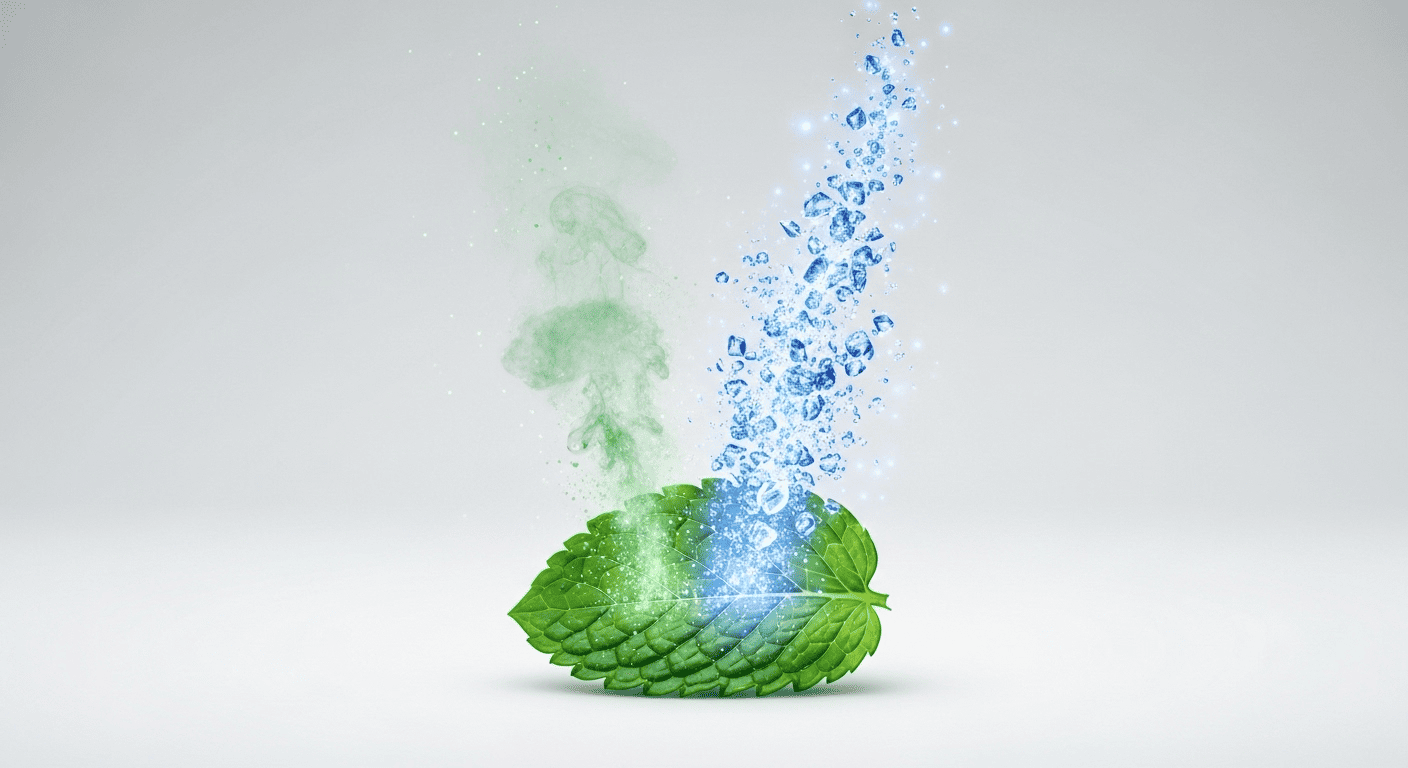When we inhale the aroma of a perfume, we tend to think of it as a singular experience, a message delivered directly to our brain’s olfactory center. However, the sensation of scent is far more complex, often involving a second, parallel information pathway: the trigeminal nerve. This crucial cranial nerve, the largest in the head, is not responsible for identifying odors, but rather for perceiving the physical “feeling” of a scent—the tingling burn of cinnamon, the cooling rush of peppermint, or the sharp prickle of ammonia.
This nerve system acts as the “somatosensory” dimension of smell, adding texture, temperature, and even a hint of pain to an otherwise purely aromatic experience. Perfumers have intuitively understood and utilized this phenomenon for centuries, but modern neuroscience is now revealing the precise mechanisms behind it. By deliberately selecting ingredients that stimulate the trigeminal nerve, a perfumer can add a hidden layer of physical sensation to a fragrance, making it feel more dynamic and alive.
Understanding this dual-sensory process enriches our appreciation for the art of perfumery. It shows how a creator can manipulate not just our emotions but our physical perceptions. This same principle of using sensory input to shape an experience is at the heart of many educational and memory-based techniques, such as the methodical use of olfactory pyramid memory aids to structure and retain complex information.
The Nerve of Sensation
The trigeminal nerve is a massive neural network with three main branches that provide sensory feedback from the entire face, including the eyes, sinuses, and the mucosal lining of the nose. Its primary job is to detect and transmit physical sensations like touch, temperature, and pain. When we inhale certain volatile chemicals, they don’t just interact with our olfactory receptors; they also directly stimulate the free nerve endings of the trigeminal system within our nasal cavity.
This is why some smells feel like more than just smells. The “cooling” sensation from menthol is not a trick of the mind; the menthol molecule actually binds to a specific trigeminal receptor (TRPM8) that is also activated by cold temperatures. Your brain interprets this signal as “cold,” even though the air you’re breathing hasn’t changed temperature. It is a true neurochemical reaction.
Similarly, the “hot” or “spicy” feeling from smelling cinnamon or chili is caused by molecules like cinnamaldehyde and capsaicin activating the TRPV1 receptor. This is the same receptor that detects physical heat, which is why your brain registers the scent as a burning or warming sensation. The trigeminal nerve adds a tactile, physical dimension to the abstract experience of smell.
A Perfumer’s Secret Weapon
Skilled perfumers use this secondary sensory system as a powerful tool to add texture, dynamism, and structure to their creations. By incorporating ingredients known to stimulate the trigeminal nerve, they can evoke feelings and create effects that would be impossible to achieve with purely aromatic molecules. This is a subtle art that can dramatically change the perceived character of a fragrance.
The trigeminal effect can be used in a variety of ways to enhance a composition.
- Creating a “Lift”: A tingling, stimulating ingredient like pink pepper or ginger can be used in the top notes to create a vibrant, “electric” opening that makes the fragrance feel like it’s leaping off the skin.
- Adding “Texture”: Certain woody or spicy notes can create a subtle, raspy, or “scratchy” feeling in the nose that mimics the physical texture of dry wood or rough fabric.
- Evoking “Temperature”: The most common use is to create a feeling of warmth (with cinnamon, cloves, or other spices) or coolness (with mint, eucalyptus, or camphor), which can reinforce the overall theme of a fragrance.
- Providing “Structure”: A backbone of trigeminal stimulants can give a fragrance a certain “buzz” or “hum,” a continuous, low-level physical sensation that adds to its presence and longevity.
These effects are often subliminal, not consciously registered by the wearer, but they contribute significantly to the overall richness and complexity of the perfume.
The Unseen Structure of Scent
The trigeminal effect is what gives many fragrances their “shape” and “volume.” An purely olfactory scent can sometimes feel flat or two-dimensional, like a beautiful photograph. The addition of trigeminal stimulants is like turning that photograph into a sculpture; it gives the scent a physical presence and a tangible texture in the air.
Imagine the difference between looking at a picture of a fizzy drink and actually feeling the tingle of the carbonation on your tongue. That tingle is a trigeminal sensation, and perfumers can create a similar effect for your nose. This is why some aldehyde-heavy fragrances are described as “sparkling” or “bubbly”—the aldehydes create a subtle, prickling sensation that our brain interprets as effervescence.
This hidden layer of sensation is a testament to the sophistication of modern perfumery. It shows how creators are not just painters of scent but also sculptors, using a deep, intuitive knowledge of neurochemistry to build complex, multi-sensory experiences. It is an art form that engages more of our brain than we often realize.
From Irritant to Art Form
Many of the molecules that stimulate the trigeminal nerve are, at their core, irritants. The nerve’s primary function is, after all, to warn us of potentially harmful substances. The art of the perfumer lies in using these potentially harsh materials in micro-doses, at concentrations that are just high enough to trigger a pleasant sensation without causing actual pain or discomfort.
This is an incredibly delicate balancing act. A touch too much of a spicy or minty component can turn a fragrance from invigorating to medicinal or even unpleasant. The precise dosage is critical, and it is this mastery of moderation that separates a master perfumer from an amateur.
This controlled use of irritants transforms them from a simple warning signal into a sophisticated artistic element. It is a form of sensory alchemy, turning a potential negative into a positive, and using the body’s own protective mechanisms to create a deeper and more profound experience of beauty.
Frequently Asked Questions
No. When used in the tiny, controlled concentrations found in fine fragrances, these ingredients are perfectly safe. They are designed to create a mild, pleasant sensation, not to cause actual irritation or harm to the nasal passages.
Yes, absolutely. Just as some people have a higher tolerance for spicy food, individuals can have varying levels of sensitivity to trigeminal stimulants in perfume. A scent that one person finds pleasantly “tingling,” another might find uncomfortably “sharp.”
Some of the most common examples include pink pepper, black pepper, cinnamon, clove, mint, eucalyptus, ginger, and aldehydes. If a fragrance is ever described as “spicy,” “cooling,” “sparkling,” or “fizzy,” it is very likely that it contains ingredients specifically chosen to stimulate the trigeminal nerve.

